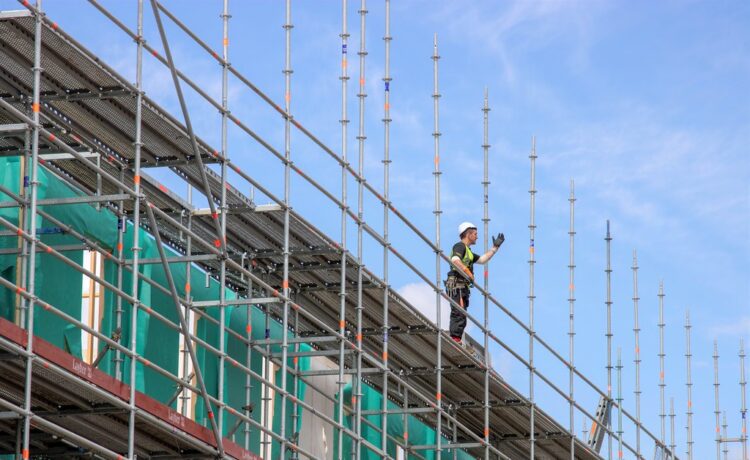Everyone loves a good before-and-after of a home or office makeover. There’s something deeply satisfying about it, a sense of completion that’s hard to match. Seeing a tired, worn-out living room side-by-side with its post-renovation version, now full of style and elegance, always gives us hope that better days are coming and that transformation is within reach.
But there’s something the glossy magazines and design influencers don’t usually show: the exhausting, messy process of turning a dated property into a thing of beauty. This is the stage where your home is wrapped in steel poles, dust sheets, and timber boards.
Scaffolding rarely makes it into the Instagram carousel, but it’s often the backbone of a serious renovation. It ensures safety, precision, and progress. Put simply, it’s what makes everything possible.
Why It Matters More Than You Think
Less observant readers might think a revamp is all about looks. They couldn’t be more wrong. It’s all about logistics, planning, structure. That’s why scaffolding is paramount. Remember: Renovation is less about creative vision and more about execution.
And before a single tile is laid or a wall is painted, there’s a sequence of practical steps that needs to be flawlessly managed. Scaffolding provides the literal framework for that process. It allows tradespeople to access every corner of a property safely and efficiently, especially at height.
Good scaffolding enables teams to carry out work with accuracy and care. It keeps timelines on track, minimises risk, and creates a stable environment where everything from roofing to façade work can be done properly. In other words, this equipment turns ideas into action. Without it, even the most stunning design plans can come to a halt.
But when should you use it, exactly?
Types of Renovations That Usually Require Scaffolding
Not all renovations are created equal. Some can be tackled with a paintbrush and a free weekend. Others demand something sturdier: temporary structures that offer safe access, stability, and a working platform at height. Whether it’s restoring a period façade or replacing a chimney stack, certain jobs simply can’t be done from the ground.
Here are some of the most common home improvement projects that require this kind of elevated support.
1. Roof Work
From full replacements to minor repairs, anything involving a pitched roof needs solid access.
2. External Painting and RenderingOn multi-storey buildings, ladders just don’t cut it. A secure working base is key for applying finishes evenly and reaching every detail without compromise.
3. Window Installations at HeightSwapping out windows on upper floors or adding new ones to a loft extension requires more than a steady hand.
4. Loft Conversions and Roofline ExtensionsWhen the build involves structural alterations high up, temporary frameworks allow multiple trades to work simultaneously without delay.
5. Chimney RepairsTucked away above the roofline, chimneys are awkward and often hazardous to reach. A proper setup ensures that brickwork, pointing, or removal can be done safely.
6. Installing Solar PanelsThese days, solar installations are increasingly popular, but still often take place at height. A stable surface is essential for handling the equipment and securing it into place.
7. Exterior Maintenance and GutteringTasks like replacing fascias or repairing cracked render are far easier when there’s unrestricted movement along the wall, especially on taller properties.
8. Period Property RestorationsWith heritage homes, there’s often added complexity. Sensitive materials and intricate detailing require careful handling, which is only possible with proper access and support.
Choosing the Right Support
If your renovation project requires elevated access, finding the right provider is just as important as choosing the right builder or designer.
First and foremost, check credentials. A reputable scaffolding company should carry full insurance and follow UK safety regulations. Membership in recognised organisations such as the Scaffolding Association, or accreditations from CHAS or SMAS, are strong indicators of professionalism.
When requesting quotes, avoid vague figures. A trustworthy company will provide a detailed breakdown of costs, covering the erection of the structure, the hire period, and dismantling. It’s also worth asking whether they charge extra for changes mid-project, as some do.
Don’t hesitate to ask about their procedures. Do they supply edge protection and proper access points? Do they carry out risk assessments before work begins? These are non-negotiables, not extras.
Take the time to read reviews and, if possible, speak to past clients. Good companies are happy to provide references and examples of previous work.
Reliability and punctuality matter. Delays in setting up can slow the entire renovation. Clarify timelines from the outset, including how soon they can dismantle once the job is complete.
Steer clear of any offers that involve cash-in-hand deals. If the price seems unusually low, there’s usually a reason. Stick with firms that provide written contracts and official invoices. You’re paying for safety, accountability, and professional service.
Finally, think about appearance. If the structure will be up for weeks in front of your home, you may want a company that offers netting, protective sheeting, or even painted poles to keep things looking tidy and less intrusive.
Foundations You Never See
Renovation is shaped by the method, the timing, and the people behind it. Even the temporary frameworks – the things no one photographs – have a lasting impact on the result.
The homes that feel the most effortless are usually the ones that were built with the most care. And once the final sheet is folded and the last pole comes down, what remains isn’t just new. It’s sound, ready, and gorgeous.






